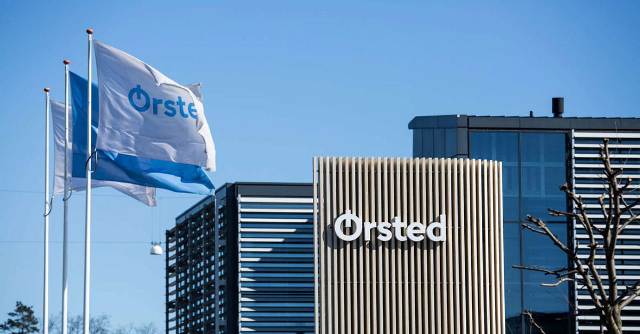Orsted has reported revenue of DKK 37.8 billion in H1 2025, up 11 percent from DKK 34.2 billion in H1 2024, mainly driven by higher power generation, increased gas and power prices, and new renewable capacity.
Offshore performance was supported by the ramp-up of Gode Wind 3, stronger availability, compensation for grid delays, and higher income from CfDs, ROCs, and green certificates, though partly offset by lower wind speeds.
Onshore revenue grew on the back of new solar projects at Sparta Solar, Mockingbird, and Eleven Mile, while Bioenergy & Other benefited from higher gas sales linked to the Tyra field and improved spreads. In Q2 2025, revenue rose 14 percent year-on-year to DKK 17.1 billion, reflecting higher power prices and stronger offshore earnings despite weaker wind conditions.
“We maintain our full-year EBITDA guidance of DKK 25-28 billion excluding earnings from new partnership agreements and impacts from cancellation fees. We have changed the directional guidance for Offshore from ‘Higher’ to ‘Neutral’ due to lower wind speeds in the first months of 2025,” Rasmus Errboe, Group President and CEO of Orsted, said.
Renewables
Renewables accounted for 99 percent of total generation in H1 2025, up from 97 percent a year earlier, helped by the phase-out of coal in H2 2024 and reduced natural gas-based output at CHP plants.
Combined offshore and onshore generation increased 1 percent to 17.4 TWh, supported by new wind and solar capacity and fewer curtailments and outages, although average wind speeds were lower. Offshore availability improved to 92 percent, and solar output rose with the addition of new capacity.
Greenhouse gas emissions from own operations fell 72 percent, with scope 1 and 2 intensity dropping to 4 g CO2e/kWh from 15 g CO2e/kWh, and scope 3 emissions down 21 percent, reducing overall scope 1–3 intensity by 63 percent to 52 g CO2e/kWh.
Major renewable projects advanced during the period. In the US, Revolution Wind reached about 80 percent completion and Sunrise Wind 35 percent, while in Taiwan, Greater Changhua 2b and 4 achieved first power in July despite some installation delays.
In Europe, Hornsea 3 moved ahead with delivery of its offshore converter station topside and start of monopile fabrication, and Baltica 2 in Poland entered early construction.
Orsted also progressed a 300 MW energy storage facility in the UK and a carbon capture plant in Denmark, both due in 2026, alongside onshore projects such as Badger, the Old 300 battery energy storage system, and various European renewable assets.
Investment
Orsted recorded gross investments of DKK 25.0 billion in H1 2025, primarily allocated to offshore wind farms such as Greater Changhua 2b and 4 in Taiwan, Hornsea 3 and Baltica 2 in Europe, and Sunrise Wind and Revolution Wind in the US (DKK 21.2 billion).
Onshore wind and solar PV projects received DKK 2.7 billion, including Badger, the BESS at Old 300, and a European project portfolio. CHP plants, notably carbon capture and storage facilities in Denmark, accounted for DKK 1.0 billion.
Divestments totalled DKK 7.2 billion, mainly from the 50 percent farm-down of Eleven Mile and Sparta Solar and the partial farm-down of West of Duddon Sands. In comparison, H1 2024 divestments were DKK 2.3 billion.
Interest-bearing net debt increased to DKK 67.1 billion from DKK 58.0 billion at the end of 2024, largely due to a negative free cash flow of DKK 9.9 billion. Capital employed rose to DKK 164.6 billion from DKK 151.5 billion, driven by new investments
Baburajan Kizhakedath

